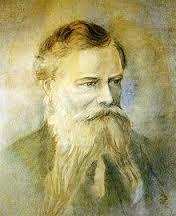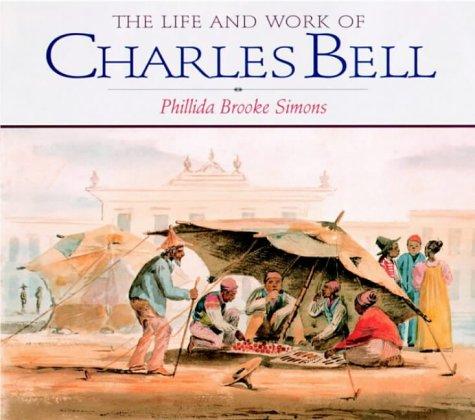Disclaimer: Any views expressed by individuals and organisations are their own and do not in any way represent the views of The Heritage Portal. If you find any mistakes or historical inaccuracies, please contact the editor.
In the article below, Tony Murray profiles civil engineer and artist Charles Davidson Bell. The town Bellville was named in Bell's honour. The piece first appeared in the publication 'Past Masters: Pioneer Civil Engineers who contributed to the growth and Wealth of South Africa'. Click here to view the stories of other great engineers.
Bell was born in Scotland in 1813 and as a sixteen-year-old emigrated to the Cape, where his uncle, Sir John Bell, was the Colonial Secretary. He was energetic, blessed of an enquiring mind, and possessed a prodigious artistic talent, and he was soon accepted into Cape society. In 1834 he was a member of Sir Andrew Smith's scientific expedition which ventured north beyond the Tropic of Capricorn, and he returned to Cape Town over a year later with a splendid record of the trip in the form of some three hundred sketches and paintings of life in hitherto unexplored Africa.
He joined the Surveyor-General's Department as a clerk and was taught land surveying (and very apparently quite a bit about engineering) by Charles Michell. Very soon he became his chief assistant, spending extended periods in the field surveying the troublesome Eastern Frontier. After Michell retired in 1848, the posts of Surveyor General and Colonial Engineer were split and Bell was promoted to the former. He proved to be an energetic and competent officer who set the standards for the meticulous work carried out by his department from then onwards.
Charles Davidson Bell
His main contribution to civil engineering derives from the fact that when the Colonial Engineer George Pilkington died in office in 1858, Bell completed the accurate survey and location of the railway from Cape Town to Wellington. Later, when John Scott Tucker was relieved of his duties as client engineer for the railway, Bell took over and administered the contract with common-sense and a fair mind, without letting the railway company or the contractor off the hook in any way. In the words of a contemporary, he was the only one in the colony who "could lay out railway curves, build bridges, raise embankments, bore tunnels, inspect locomotives" - and in a few words, save the contract. (Michell must have been an excellent mentor!) In the process he made a decision which has had an enormous influence on the shape of Cape Town – he moved the site of the proposed railway station one block closer to the sea, thereby saving the Grand Parade. The town of Bellville, which grew up around the station serving Durbanville, was named in his honour.
Bell also made an independent survey to check the viability of Andrew Bain's proposed Bain's Kloof location. In the wake of the copper boom of 1854, he spent an exhausting four months in Namaqualand, ostensibly settling mining claim disputes, but in fact producing a comprehensive report on the geology and the mining and agricultural potential of the region, and in particular, an appreciation of the land rights of the indigenous peoples. The report included an initial survey of the route for the copper railway down the escarpment to Port Nolloth, which was implemented in 1869 after he had overruled Andrew Bain's proposal for a line to Hondeklip Bay.
Apart from his official duties, Bell's reputation as a water colourist and cartoonist flourished, and he is perhaps the best regarded of the several competent amateur artists – including some early engineers – who worked at the Cape. Many of his scenes of Cape life, landscapes and characters are preserved in premier South African collections, and are an important contribution to South African history.
A few of Bell's creations
He designed the famous Cape triangular postage stamps which are nowadays prized by philatelists. He was a founder member and third Chairman of the Board of the Old Mutual and designed the "crossed anchors" motif which was used until recently and, in modified form, is still the basis of the company logo. The well-known badge of the South African College (now UCT) is also his work.
Sadly his private life was clouded by a notorious Cape scandal when his first wife decamped to Australia in the company of a doctor whom she had met on a voyage to South Africa. His second wife bore him several children.
He retired in 1872 and returned to Scotland, and died in Crail in 1882. Like many of his countrymen, he made an enormous impression on his adopted land. The full story of his achievements is recorded in a splendid book, "The Life and Work of Charles Bell" by Phillida Brooke-Symons published by the Fernwood Press in 1998.
Book Cover
Tony Murray is a retired civil engineer who has developed an interest in local engineering history. He spent most of his career with the Divisional Council of the Cape and its successors, and ended in charge of the Engineering Department of the Cape Metropolitan Council. He has written extensively on various aspects of his profession, and became the first chairman of the History and Heritage Panel of the South African Institution of Civil Engineering. Among other achievements he was responsible for persuading the American Society of Civil Engineers to award International Engineering Heritage Landmark status to the Woodhead dam on Table Mountain and the Lighthouse at Cape Agulhas. After serving for 10 years on SAICE Executive Board, in 2010 he received the rare honour of being made an Honorary Fellow of the Institution. Tony has written manuals, prepared lectures and developed extensive PowerPoint presentations on ways in which the relationship between municipal councillors and engineers can be more effective, and he has presented the course around the country. He has been a popular lecturer at UCT Summer School and has presented five series of talks about engineers and their achievements. He was President of the Owl Club in 2011. His book "Ninham Shand – the Man, the Practice", the story of the well-known consulting engineer and the company he founded, was published in 2010. In 2015 “Megastructures and Masterminds”, stories of some South African civil engineers and their achievements was written for the general public and appeared on the shelves of good bookstores. “Past Masters” a collection of his articles about 19th century South African Engineers is also available from the SAICE Bookshop.
Comments will load below. If for any reason none appear click here for some troubleshooting tips. If you would like to post a comment and need instructions click here.


